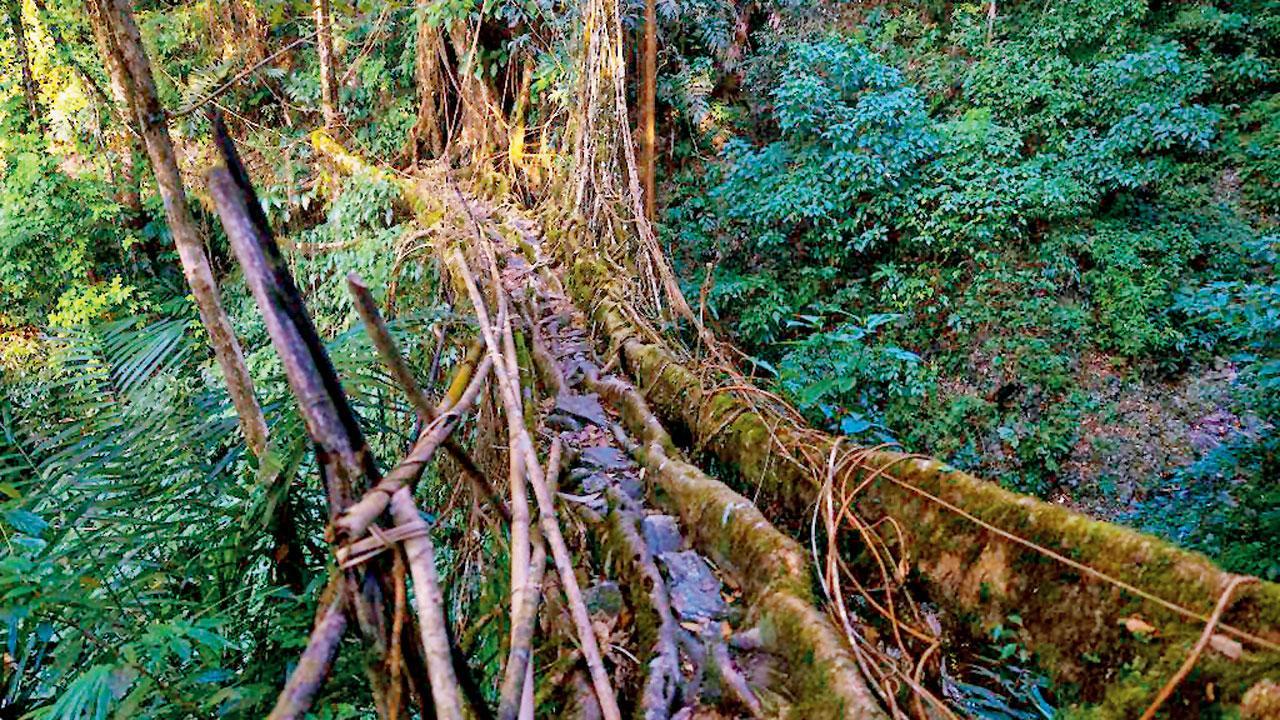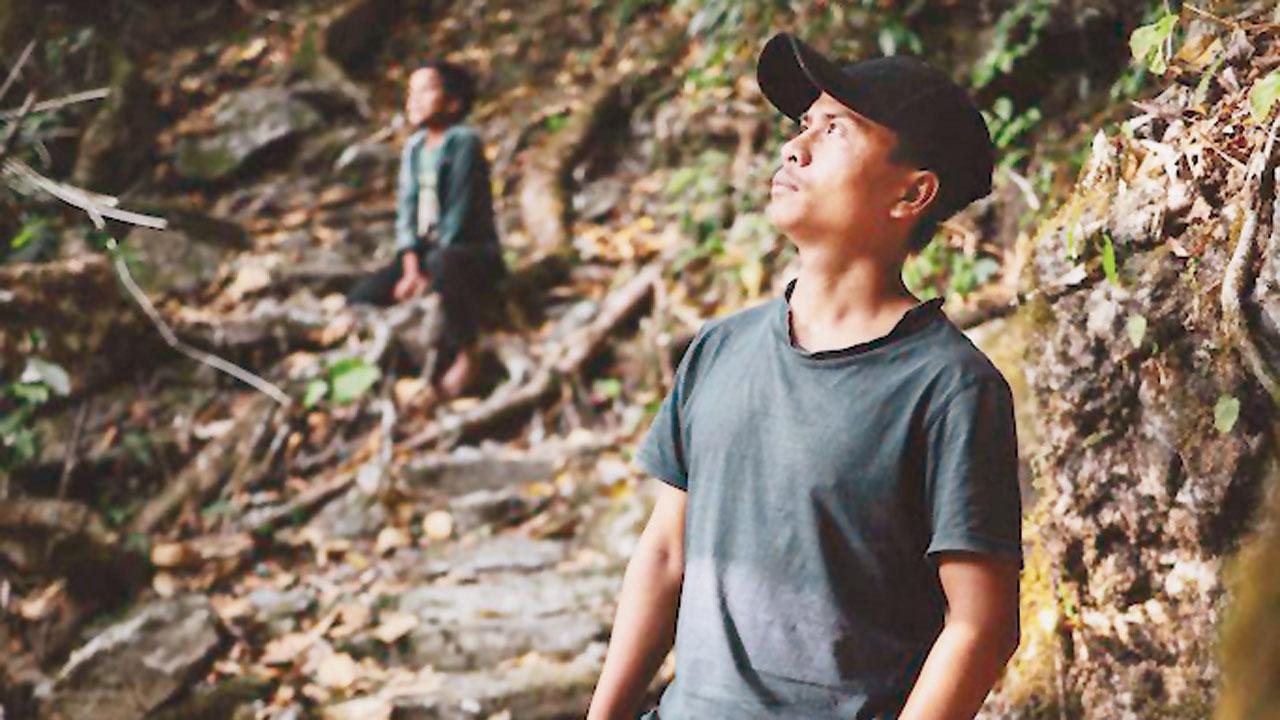A lesson in human ingenuity and natural conservation is at the heart of a story shot in the Khasi hills of Meghalaya. Watch it to marvel, drool and armchair travel

It takes around 20-30 years for a bridge to become strong enough to be able to take the weight of humans. Unlike bamboo bridges, these aren’t weakened by the long rain spells Meghalaya experiences. Pics/Sapan Narula
These roots hold stories of our elders. Come! I’ll show you my home…” This line paired with stunning, peaceful visuals within the first 30 seconds of Unseen Meghalaya transport you to another world. It’s exactly what wildlife filmmaker Simran Gill and director-cinematographer Sapan Narula were hoping.
ADVERTISEMENT
The 4.5-minute narrative documentary streaming on YouTube looks at the place that living root bridges hold in the lives of members of the Khasi tribe, to which the film’s protagonist Morningstar Khongthaw belongs. The project has many firsts to its credit. It is filmed around and on the only triple decker living root bridge in the world; this was the first crew to ever shoot here, and this is also the longest surviving natural spectacle.

Simran Gill and Sapan narula
Gill shot the film for Canon India who approached him to use their Canon EOS R5. While she had spent considerable time in the lap of nature, it was Narula’s first visit to a north eastern state. “Scared, but also excited”, is how he describes the experience. “Much of the information online about living root bridges wasn’t fun and exciting,” Gill admits. Friend and former colleague Manbha Shwa Khonglah, who is line producer on the film, told Gill about Morningstar. He was 24 then, the youngest conservationist working to save living root bridges, a man-made natural wonder created by ingenious members of the tribe who guide the tangled roots of the local Ficus Elastica tree, which are then entwined around bamboos. It takes around 20-30 years for a bridge to become strong enough to be able to take the weight of humans. Unlike bamboo bridges, these aren’t weakened by the long rain spells Meghalaya experiences. “This [Morningstar’s conservation story] was the interesting spin we needed in the documentary and also, no one had recorded this triple-decker living root bridge. We wanted a different flavour to the story, and that’s where this young man came in,” Gill remembers.
The film follows him as he inspires a boy from his tribe to continue to preserve the natural treasure. “During the monsoons, everything gets flooded. They [villagers] can’t cross the valley, and these massive root structures come handy,” explains Narula. Not only is this natural structure important for the survival of the villagers, it also enjoys the honour of being a UNESCO World Heritage site.

Morningstar is the youngest conservationist working to save living root bridges, a man-made wonder created by ingenious members of the tribe who guide the tangled roots of the local Ficus Elastica tree, which are then entwined around bamboos
Filmed in the Pynursla region of East Khasi Hills during the pandemic once the Meghalaya government eased Covid restrictions, the film took two months to research . “Covid didn’t pose a problem when we were there. It’s more troublesome in cities. We almost forgot the pandemic while we were there,” says Narula who, with his four-person crew, shot the documentary in just four days. The lean crew also ensured they didn’t pressure the environment. Even with minimal equipment, the crew’s biggest challenge was transporting the camera down to the foothills. “It was a two-hour climb up and down each way every day.” Unseen Meghalaya has been nominated across festivals including Venice Shorts, Cannes international independent film festival and Goa Short Film Festival.
WHAT: Unseen Meghalaya
WHERE: Unseen Meghalaya, Canon India/ YouTube
 Subscribe today by clicking the link and stay updated with the latest news!" Click here!
Subscribe today by clicking the link and stay updated with the latest news!" Click here!







